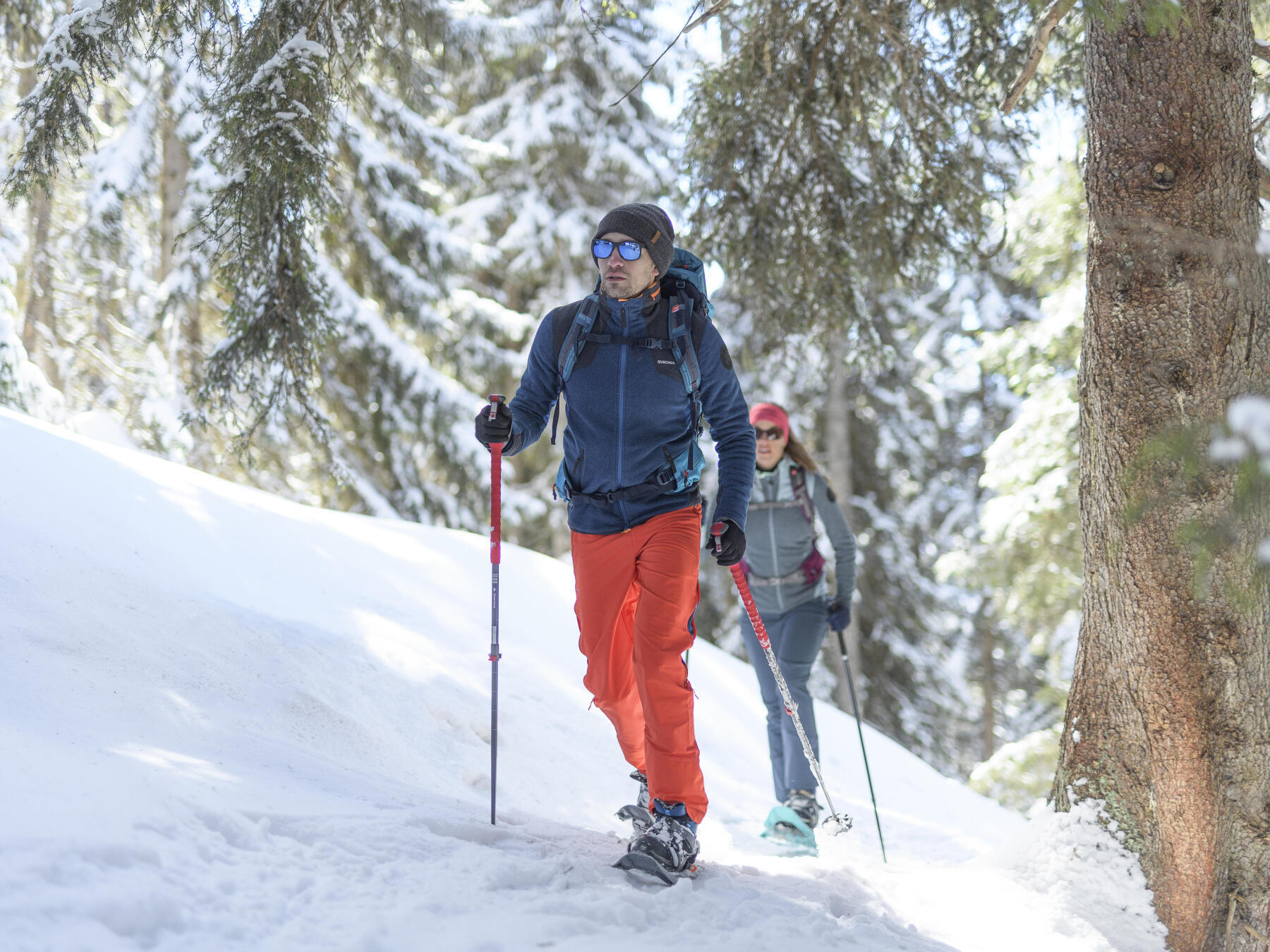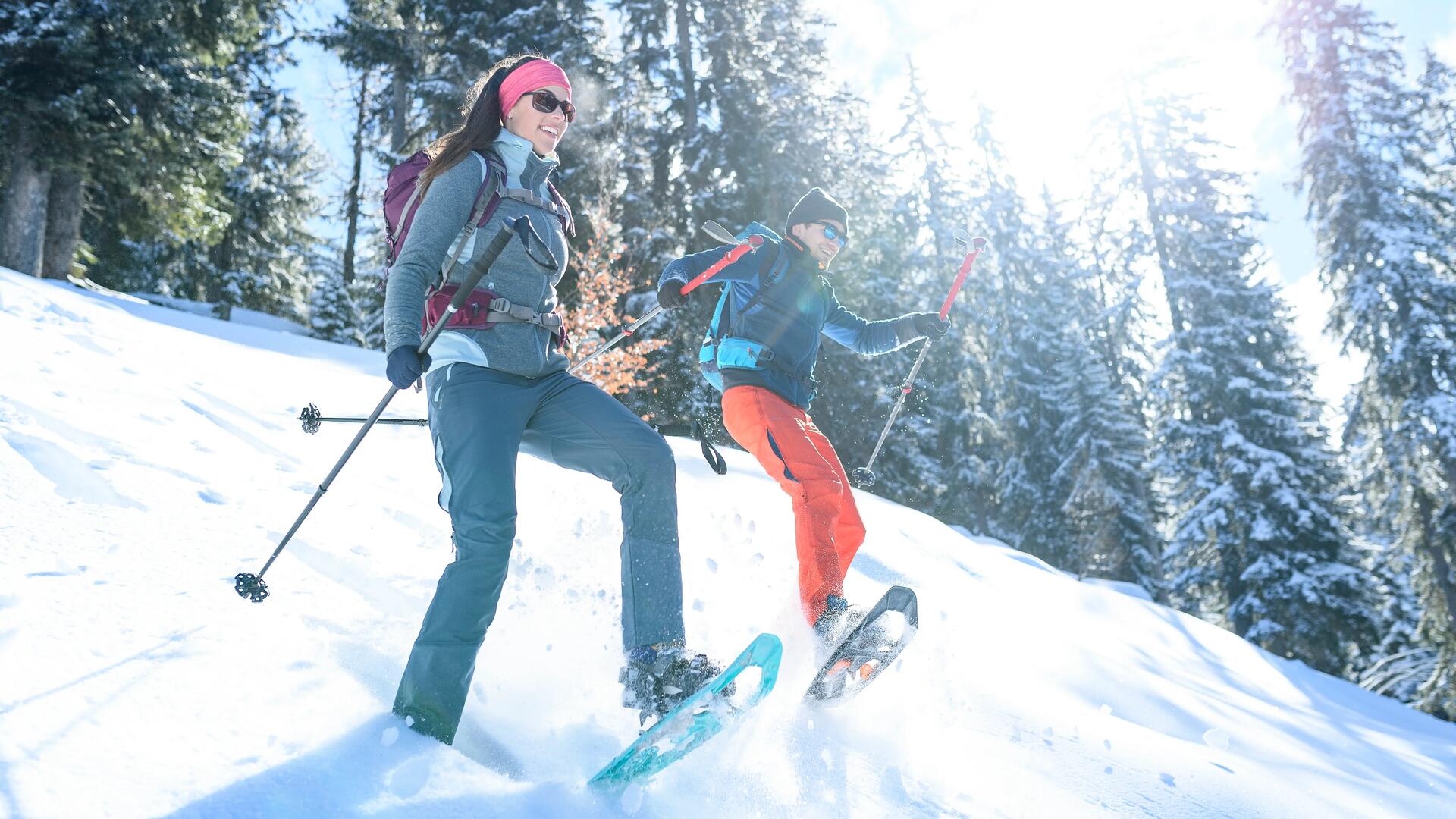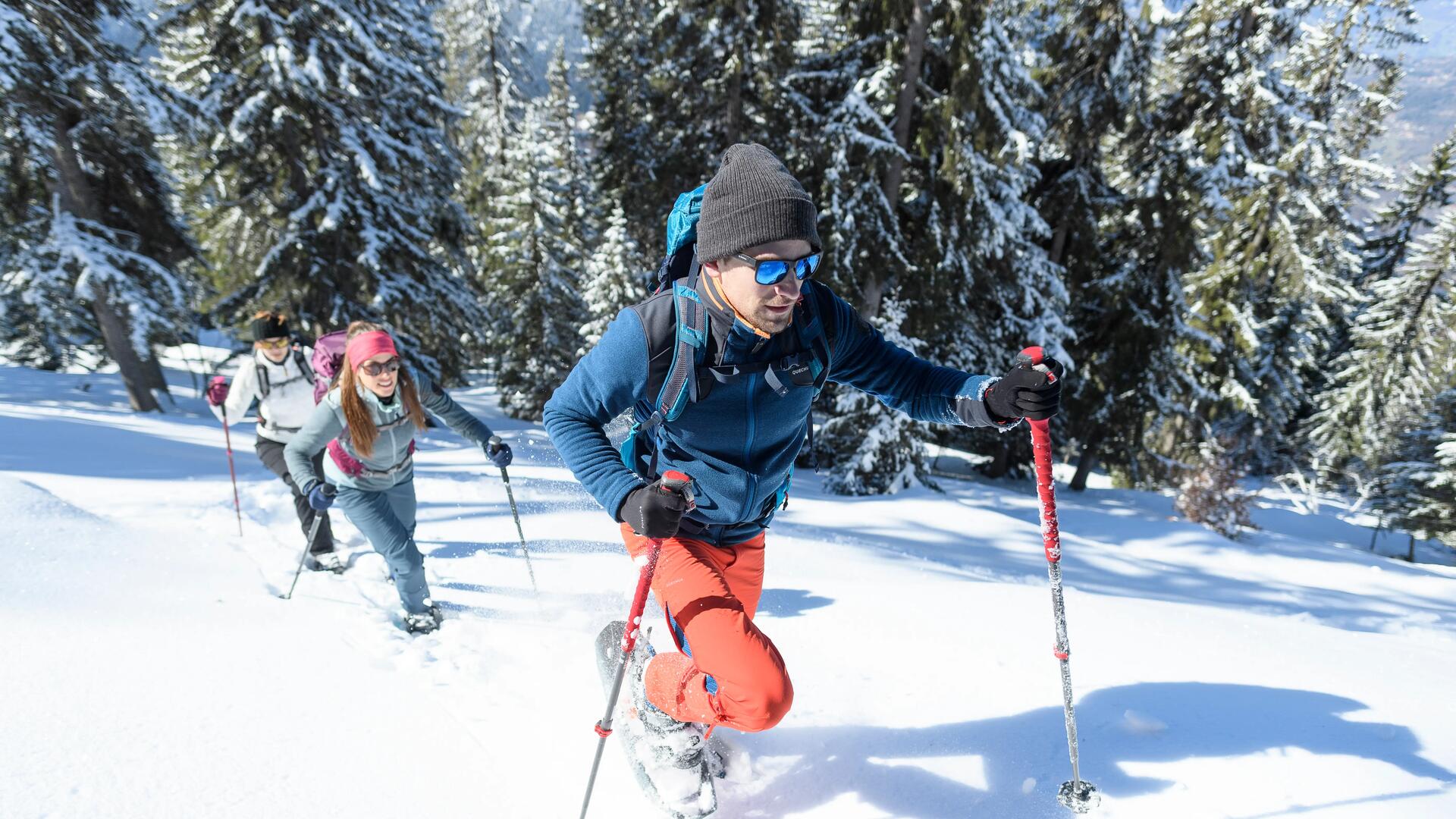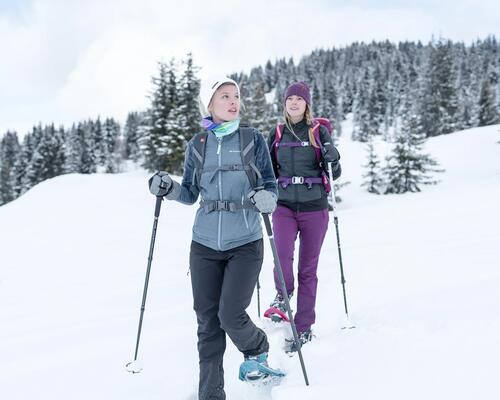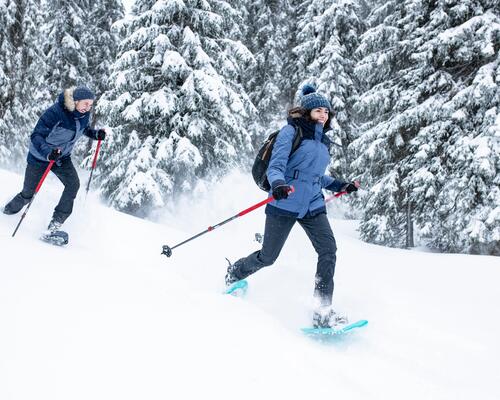The essentials:
Boots: You don't need to have performance boots unless you’re an avid snowshoer. However, your boots should be waterproof, warm and comfortable. They should also cover your ankles to provide better support and help you to avoid injury.
Clothing: Dress according to the "multi-layer" system. Don't forget your toque, gloves or mittens, neck warmer, extra pair of socks and a backpack. If you plan to venture into the mountains, or anywhere with powder snow, you should add gaiters to your list. Gaiters are waterproof sleeves that cover the lower leg and attach to your boot; they keep your calves and ankles better protected from snow and ice.
Poles: For a simple, casual walk on groomed trails, poles are not always necessary. You can use your ski poles or telescopic hiking poles if the terrain is more uneven, or has difficult trails. They will help you distribute your effort and increase your stability.
Snacks: Always bring lunch or snacks and water (or even a yummy hot chocolate) with you when you are snowshoeing. It can be a relatively gentle and fun activity, but your body will still work hard, and you will most likely get hungry while you're out there! Snacks like nutrition bars, nuts and dates are always a great idea.
Safety equipment: Remember to pack a first aid kit, sunscreen, compass, topographical map, hand and feet warmers, avalanche safety equipment, fire starter, repair kit, and spare snowshoe straps. Keep in mind that, in some areas, your cellular signal may be weak or non-existent; so always be prepared!

